Building and renovation
Waiheke Island eco homes
Green Ideas editorial team
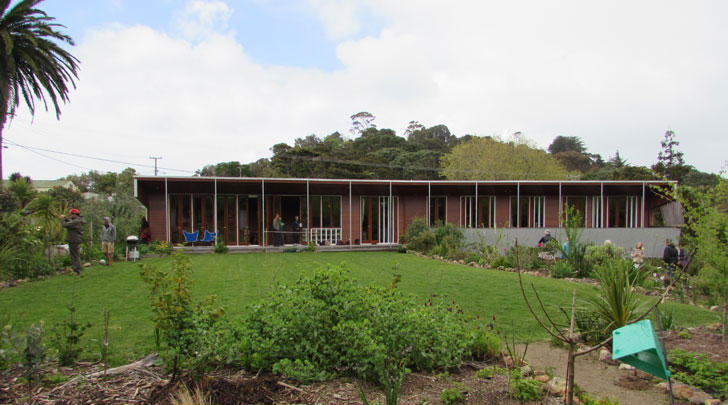
Waiheke is uniquely positioned for smart, eco-living as the island has no reticulated sewerage system. Each home therefore has its own water and treatment plant on site which means each resident has to have a good understanding of waste and how they use water. There’s also generally a great deal of attention paid to the environment and social issues by the residents who live there.
We were really intrigued to visit these two homes, which have adopted sustainable living environments for quite different reasons. Whether you are starting a new build or looking for ways to make your home more eco-friendly, these Tread Lightly homes show there are a range of approaches you can take to reduce your footprint and live a greener lifestyle.
The homes we saw were both ticking eco-boxes but for quite different and distinct reasons:
Energy efficient, modern living
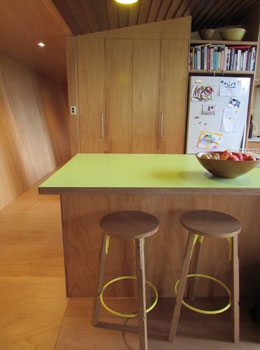
|
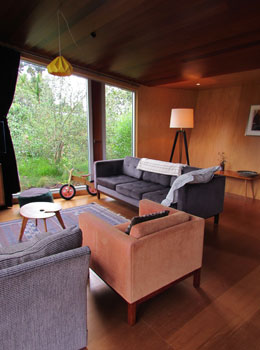
|
Anna and Richard's architecturally designed home in Ostend is a master class in energy efficient, modern living. Presenting a huge corrugated iron side to the road, the home has received a fair bit of criticism from the community for being too different to other homes in the area. On the inner, north-facing side of the home, however, warm woods, glass frontages, and an expansive garden area tell a very different story.
The home owners are the first to say that theirs is not strictly an 'eco home'. Being green wasn't their priority or intention. Energy efficiency and aesthetics were the most important factors in the build.
The house was constructed for the family of four over a six month period in 2012, and the result was a home that could be straight out of an Ikea catalogue.
Energy efficient choices were made wherever practical, and the whole home is insulated with Autex Greenstuf, with a small wood burner taking pride of place in the living room. As an example of the efficiency of the home, on a 6 degree day it can be around 25 degrees inside.
With warm cedar, and ply panelling and ceilings, a large deck and floor-to-roof double-glazed glass doors to channel the sun, the home is modern, warm and welcoming.
The deck and dining table are both made of Forestry Stewardship Council-certified kwila, with the cabinetry and wardrobes all made with a mix of kauri ply and pine ply, created by Waiheke Island business MK Furniture.
The home's drainage field runs underneath the lawn, and the septic system runs through a Biolytix tank (which is like a giant worm farm).
There are 40 spray-free fruit trees in the garden, as well as some chooks in the aptly named Hen Hilton out the back. Rhubarb, passion fruit, runner beans and lettuces are all growing – with the promise of more soon.
Spray-free, produce-rich
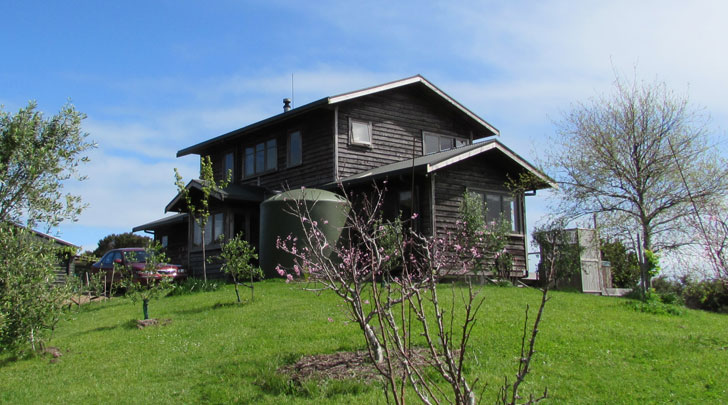
Next we travelled to Muriel and Jo's home near the Te Whau vineyard. It's high up in the hills, sitting atop a large section with charming sea and mangrove views. As a vocal critic of the use of chemicals, and a United Nations contributor on toxicity issues, Muriel made a choice 11 years ago when she and partner Jo built their home, to make it as organic, and toxin-free as possible.
Their goal for the two-storey wooden home first and foremost was a healthy environment in which to live. It was one of the last homes to get building consent before laws changed to require treated timber be used for house frames. Retired Jarrah telephone poles provide the foundation of the home, and untreated Douglas Fir Pine makes up the interior and exterior walls and ceilings. An organic, non-toxic coating was applied to the exterior, to protect it from the strong sunlight and sea salt the house gets lashed with daily.
The home was built using local labour wherever possible. A wetback system heats the internal plumbing, with the two bathrooms in the home aligned to ensure the water only has to travel the shortest of distances to reach the tap. The toilets are on a composting system.
The floorboards are recycled matai from the Devonport Naval Base and bowling club and the decking is eucalyptus. Eighteen solar panels line the roof of the home.
Outside, native bush, shrubs, flowers and fruit trees and vegetable patches line most parts of the property. The owners built the house so that there would be maximum land left for growing food - and it's an approach that has paid off. Jo and Muriel grow almost everything they eat, selling some produce to local organic markets, and storing what's left in their larder.
Wandering down a lavender-lined path, beautiful chickens cluck happily – they are usually found roaming the property. Quail, pheasants and rabbits also make regular appearances.
Citrus trees and banana plants border one side of the garden, with seed beds, vegie patches and composting areas covering much of the rest. A small but productive greenhouse features delicious, spray-free tomatoes of all varieties.
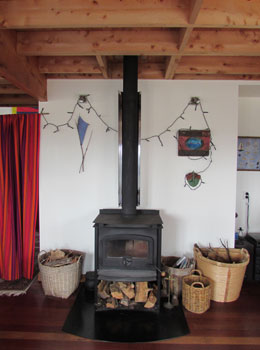
|
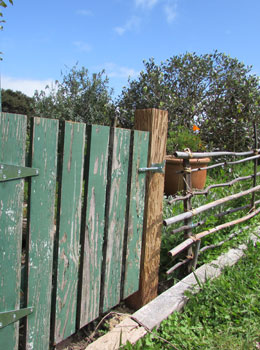
|
Thanks to Richard and Anna, and Muriel and Jo, who let us visit and photograph their beautiful homes.
